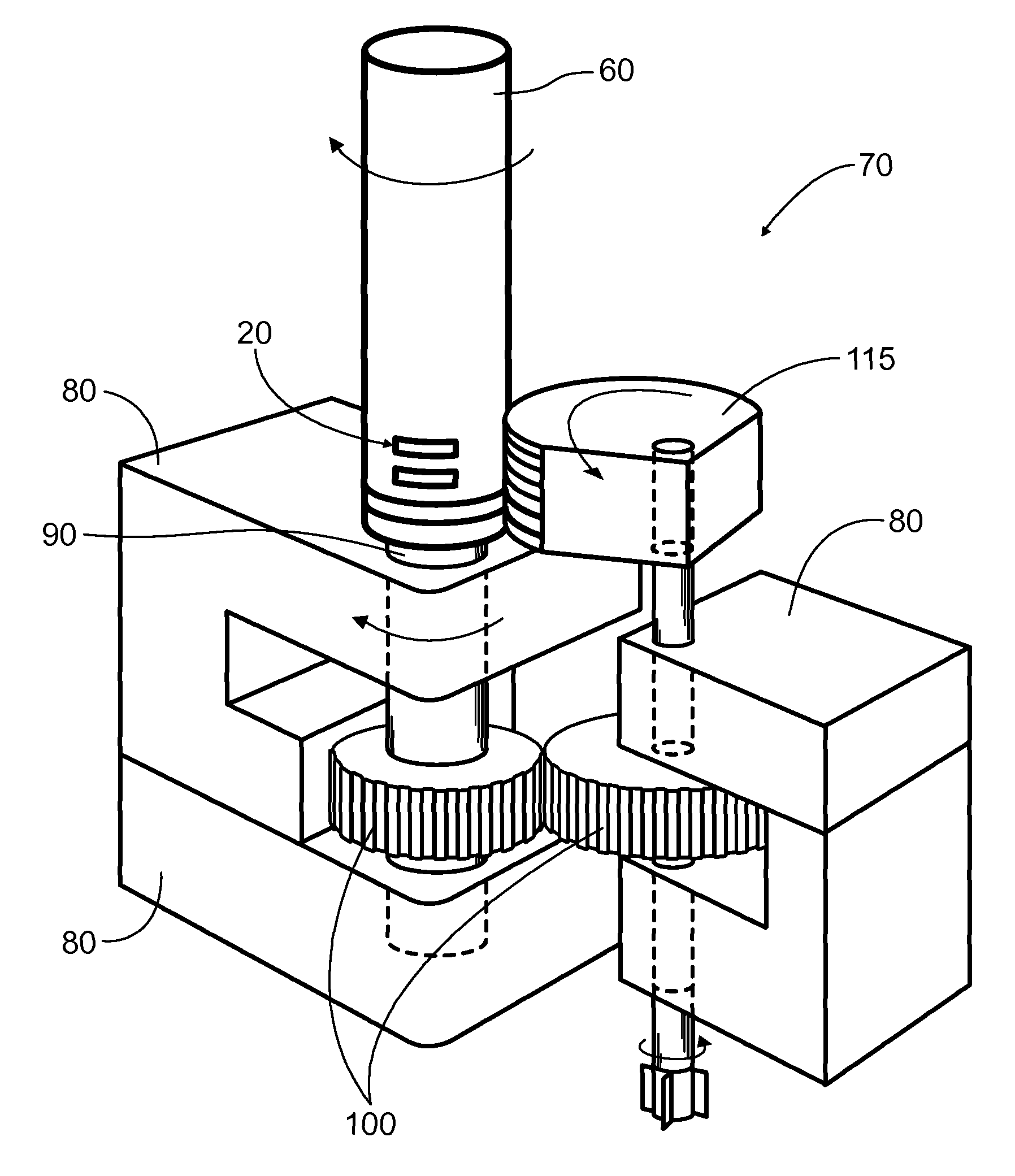Rotary method for forming a vaginal applicator
a vaginal and applicator technology, applied in the field of forming a vaginal applicator, can solve the problems of malformation of the partially circumscribing raised portions, difficult manufacturing, and inability to form the applicator
- Summary
- Abstract
- Description
- Claims
- Application Information
AI Technical Summary
Benefits of technology
Problems solved by technology
Method used
Image
Examples
Embodiment Construction
[0018]FIG. 1 is an illustration of a vaginal applicator 10 having applicator longitudinal axis LA, a gripping region 20, a plurality of raised portions 30, and a plunger 50. The applicator 10 can have at least one continuous raised portion 40, a continuous raised portion 40 being a subset of the class of raised portions 30. The applicator 10 may be formed from an applicator tube 60, the applicator tube 60 being a material including, but not limited to, cardboard, plastic, or other readably formable material. The vaginal applicator 10 can be a tampon applicator. The vaginal applicator 10 can be pessary applicator.
[0019]FIG. 2 is an illustration of an entire circumference of a gripping region 20. As illustrated in FIG. 2, in some embodiments, a plurality of raised portions 30 having equal length about the circumference of the applicator 10 and aligned along a common circumference at a particular location relative to the applicator longitudinal axis LA may be desirable.
[0020]A forming ...
PUM
| Property | Measurement | Unit |
|---|---|---|
| thickness | aaaaa | aaaaa |
| thickness | aaaaa | aaaaa |
| thickness | aaaaa | aaaaa |
Abstract
Description
Claims
Application Information
 Login to View More
Login to View More - R&D
- Intellectual Property
- Life Sciences
- Materials
- Tech Scout
- Unparalleled Data Quality
- Higher Quality Content
- 60% Fewer Hallucinations
Browse by: Latest US Patents, China's latest patents, Technical Efficacy Thesaurus, Application Domain, Technology Topic, Popular Technical Reports.
© 2025 PatSnap. All rights reserved.Legal|Privacy policy|Modern Slavery Act Transparency Statement|Sitemap|About US| Contact US: help@patsnap.com



